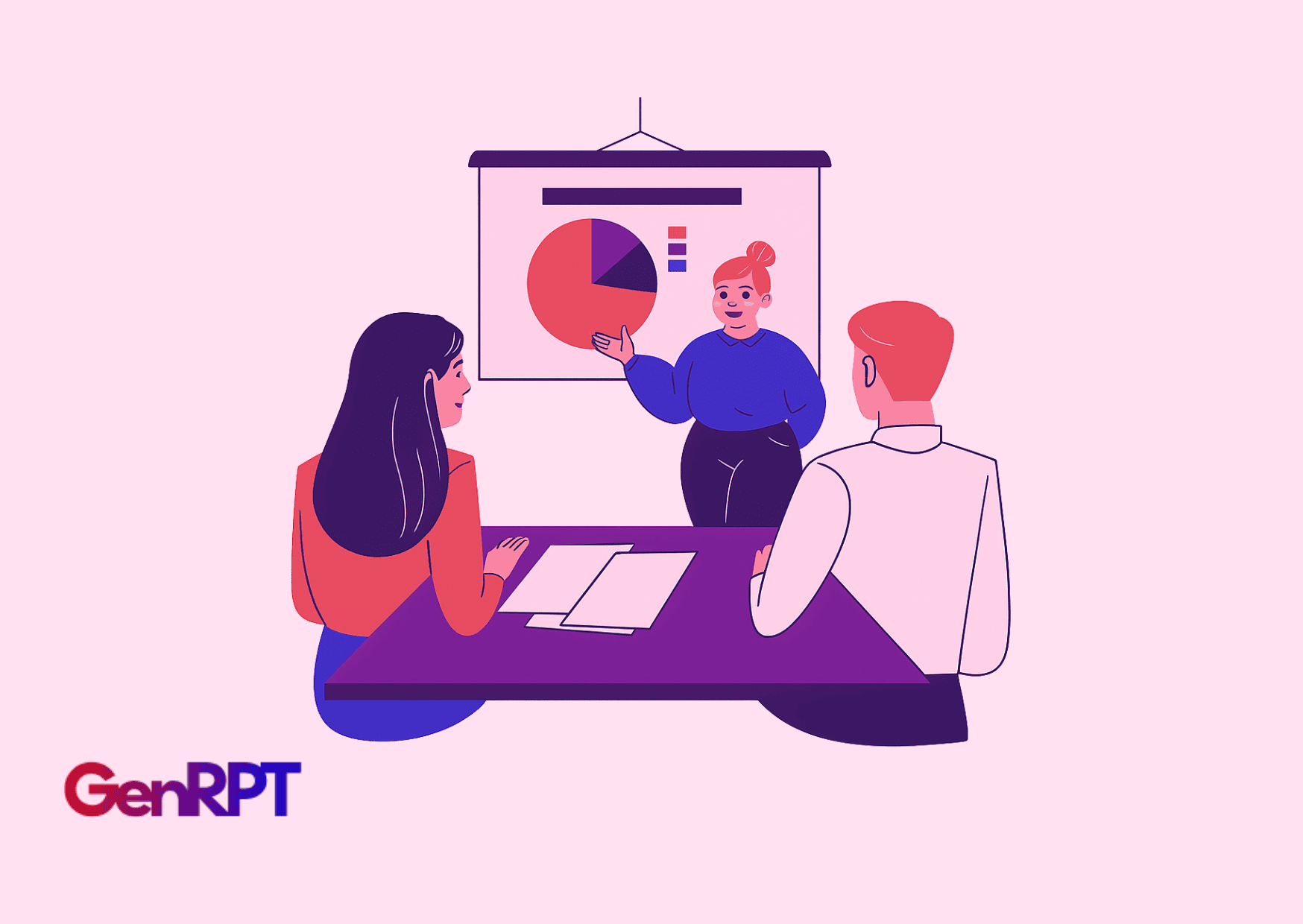
From Raw Data to Executive Summaries: The New Way to Report
November 12, 2025 | By GenRPT
I remember the first time I tried to prepare a report using multiple spreadsheets, analytics dashboards, and raw CSV files. It took hours—sometimes days—to clean, filter, and format the data before I could even start interpreting it. The process was repetitive, and by the time the report was ready, the insights often felt outdated. That’s when I realized the reporting process itself needed transformation.
Today, Artificial Intelligence (AI) has completely changed how we move from raw data to executive summaries. Instead of spending endless hours wrangling datasets, organizations now use AI-powered analytics, natural language processing (NLP), and machine learning (ML) to automate data interpretation and generate insights in minutes.
This shift isn’t just about saving time—it’s about rethinking how businesses make sense of information.
The Challenge with Traditional Reporting
Traditional reporting workflows relied heavily on manual data processing. Analysts gathered data from multiple sources—ERP systems, CRMs, or Excel sheets—and manually created charts, pivot tables, and summaries.
While this approach worked, it was prone to human error, data silos, and bias. Even after meticulous preparation, executives often received summaries that were backward-looking instead of predictive.
The result? Teams spent more time reporting the past than preparing for the future.
How AI Changes the Game
With AI-driven analytics, the process of reporting has become intelligent, interactive, and adaptive. Tools powered by generative AI, Agentic AI, and AI-driven data visualization can now automate most of the tedious tasks that used to slow down reporting cycles.
Let’s break down how AI enhances each stage:
1. Data Ingestion and Cleansing
AI tools automatically recognize and clean messy datasets, remove duplicates, and standardize inconsistent formats.
Instead of manually merging files, AI systems powered by machine learning algorithms detect anomalies, outliers, and missing data, ensuring cleaner input for analysis.
2. Automated Insights
Using AI-driven analytics and natural language processing, systems can now generate insights from complex datasets in plain English. For example, instead of presenting raw numbers, AI tools can say:
“Revenue grew 15% this quarter due to increased sales in the APAC region, driven by a 22% rise in enterprise customers.”
These AI-generated summaries help executives focus on the story behind the numbers rather than the numbers themselves.
3. Predictive and Prescriptive Analysis
Beyond describing what happened, AI systems now predict what will happen next. Predictive analytics uses past data to forecast trends, while prescriptive analytics suggests possible actions to optimize outcomes.
This is where AI in business intelligence outshines traditional tools—it provides actionable foresight rather than static hindsight.
4. Real-Time Reporting
Instead of waiting for monthly reports, executives can now access real-time dashboards powered by AI agents that continuously learn from new data. These autonomous agents track key performance indicators (KPIs), alert users to anomalies, and even draft executive summaries automatically.
AI-Powered Executive Summaries: The New Standard
The biggest shift in reporting comes at the final stage—executive summaries. Instead of analysts spending hours writing them, AI report generators create contextual, visually enhanced summaries in seconds.
Here’s how it works:
1. Data-to-Text Conversion: AI transforms structured and unstructured data into concise narratives using generative AI models and NLP frameworks.
2. Context Awareness: AI agents remember past reporting cycles and company goals, ensuring continuity in tone and focus.
3. Smart Prioritization: Systems identify which metrics matter most to specific stakeholders—finance leaders, marketing heads, or operations teams—and tailor the summary accordingly.
4. Visualization Integration: Charts, graphs, and heatmaps are auto-generated to complement written insights, giving executives a clear, visual overview.
Platforms like GenRPT, ChatGPT Enterprise, and AI-driven BI tools are already making this possible—turning vast datasets into structured, board-ready insights.
Why Businesses Are Shifting Toward AI-Driven Reporting
The benefits go far beyond speed. AI-powered reporting systems bring precision, adaptability, and strategic clarity.
1. Time Efficiency: What used to take hours can now be done in minutes, allowing analysts to focus on interpretation, not formatting.
2. Consistency: Reports maintain the same level of detail and structure across departments, reducing miscommunication.
3. Scalability: AI systems can handle data from multiple sources—ERP, CRM, IoT, or cloud storage—without breaking workflows.
4. Enhanced Accuracy: AI models continuously improve by learning from past errors and user feedback.
5. Explainability: With the rise of Explainable AI (XAI), executives can now understand how and why the system reached specific conclusions.
By combining AI in data analytics with automation, organizations are closing the gap between data collection and strategic execution.
The Human Element Still Matters
Despite the advances, AI isn’t replacing analysts—it’s amplifying their capabilities. Human oversight remains crucial for interpretation, validation, and ethical decision-making.
AI can summarize data, but humans define what success looks like. The future of reporting lies in AI-human collaboration, where machines handle data complexity, and people provide context, intuition, and creativity.
This synergy ensures that executive summaries are not just fast, but also meaningful.
The Future of Reporting
In the coming years, AI-driven reporting tools will become standard across industries—from finance and supply chain to healthcare and retail. We’ll see deeper integrations between Agentic AI systems, data lakes, and business intelligence dashboards, creating reporting ecosystems that are always learning and adapting.
Soon, executives won’t ask for a report—they’ll simply ask an AI assistant to “summarize the week’s performance” and receive a clear, contextual, and visual response within seconds.
As someone who’s watched reporting evolve from manual spreadsheets to AI-powered automation, I believe the best part isn’t the technology itself—it’s what it enables: faster decisions, better collaboration, and data that finally speaks the language of business.
